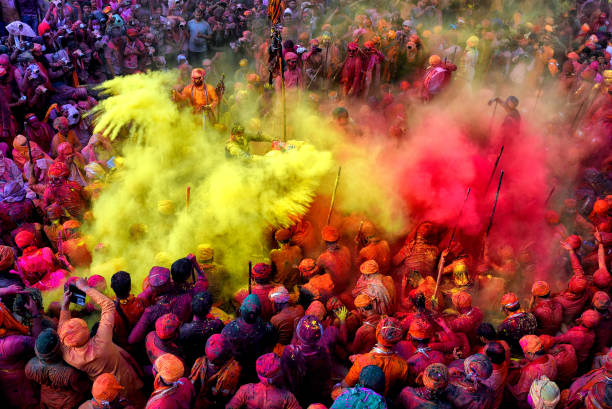Local Traditions
Traditional Festivals: Celebrate the Most Vibrant and Historic Festivals Around the World
Traditional festivals are a window into a culture’s history, customs, and community spirit. They bring together people from various backgrounds to celebrate heritage, art, music, and cuisine. Whether you’re a seasoned festival-goer or someone looking to explore new cultural experiences, this guide will take you through some of the most vibrant and historic festivals around the globe.
1. What Makes a Festival Unique?
1.1. Cultural Significance
A traditional festival often holds deep cultural meaning and reflects the history and values of a community:
- Historical Roots: Many festivals have centuries-old origins, celebrating historical events, religious traditions, or seasonal changes.
- Cultural Practices: They showcase unique customs, including traditional music, dance, rituals, and culinary practices that highlight the culture’s distinctiveness.
1.2. Vibrant Atmosphere
The energy and excitement of a festival create a lively atmosphere:
- Music and Dance: Festivals often feature traditional music and dance performances that captivate audiences and invite participation.
- Costumes and Parades: Elaborate costumes, colorful parades, and vibrant decorations add to the festival’s visual appeal and celebratory spirit.
1.3. Community and Togetherness
Festivals are a time for communities to come together:
- Local Involvement: Festivals involve local residents, artisans, and performers, fostering a sense of community pride and collaboration.
- Social Interaction: They provide opportunities for people to connect, share experiences, and celebrate common heritage.
2. Top Traditional Festivals Around the World
2.1. Oktoberfest, Munich, Germany
- Overview: Oktoberfest is the world’s largest beer festival, held annually in Munich. It started in 1810 to celebrate the royal wedding of Crown Prince Ludwig and Princess Therese.
- Highlights: Enjoy traditional German beer, hearty food, folk music, and lively parades. The festival also features carnival rides, games, and cultural exhibitions.
- Cultural Significance: Oktoberfest celebrates Bavarian culture, showcasing traditional attire such as lederhosen and dirndls.
2.2. Diwali, India
- Overview: Diwali, also known as the Festival of Lights, is a major Hindu festival celebrated across India and in various parts of the world. It signifies the victory of light over darkness and good over evil.
- Highlights: The festival involves lighting oil lamps (diyas), decorating homes with colorful rangoli designs, and sharing sweets and gifts. Fireworks and lively gatherings are also integral to the celebrations.
- Cultural Significance: Diwali is rooted in ancient Hindu mythology and is celebrated with various regional variations and rituals.
2.3. Rio Carnival, Rio de Janeiro, Brazil
- Overview: The Rio Carnival is one of the world’s largest and most famous festivals, known for its elaborate samba parades, vibrant costumes, and exuberant celebrations.
- Highlights: The festival features samba schools competing in elaborate parades, street parties, and music events. The energy and spectacle of the carnival attract visitors from around the globe.
- Cultural Significance: The Rio Carnival reflects Brazil’s rich cultural diversity, blending African, Portuguese, and indigenous influences.
2.4. Hanami, Japan
- Overview: Hanami, or cherry blossom viewing, is a traditional Japanese festival celebrating the beauty of cherry blossoms (sakura) in spring.
- Highlights: People gather under blooming cherry trees for picnics, enjoy traditional Japanese food, and partake in various cultural activities. The festival is a time for appreciating nature and socializing with friends and family.
- Cultural Significance: Hanami is deeply rooted in Japanese culture and symbolizes the fleeting nature of life, as the cherry blossoms bloom for a short period.
2.5. Mardi Gras, New Orleans, USA
- Overview: Mardi Gras, or Fat Tuesday, is a lively festival celebrated in New Orleans with parades, masquerade balls, and vibrant street parties leading up to Lent.
- Highlights: The festival features colorful floats, elaborate costumes, and music from jazz and blues to zydeco. Traditional foods such as King Cake are enjoyed during the festivities.
- Cultural Significance: Mardi Gras has French, Spanish, and Creole influences and is celebrated with a blend of cultural traditions and local customs.
2.6. La Tomatina, Buñol, Spain
- Overview: La Tomatina is an annual tomato-throwing festival held in Buñol, Spain. It’s a fun and messy event where participants throw tomatoes at each other in the streets.
- Highlights: The festival begins with a tomato fight that lasts about an hour, followed by music, dancing, and street parties. It attracts thousands of visitors each year.
- Cultural Significance: La Tomatina’s origins are debated, but it’s celebrated as a unique and exhilarating event that brings people together in a spirited manner.
3. How to Make the Most of Your Festival Experience
3.1. Plan Ahead
To fully enjoy a festival, plan your visit in advance:
- Research: Learn about the festival’s schedule, key events, and any special requirements or restrictions.
- Accommodation: Book your stay early, especially for popular festivals, to ensure convenient and comfortable lodging.
3.2. Embrace the Local Culture
Immerse yourself in the festival experience by:
- Participating: Join in the activities, whether it’s dancing, tasting local foods, or dressing in traditional attire.
- Engaging with Locals: Interact with local residents and festival-goers to gain a deeper understanding of the culture and traditions.
3.3. Stay Safe and Respectful
Ensure a safe and respectful festival experience by:
- Following Guidelines: Adhere to festival rules and local regulations to ensure a positive experience for yourself and others.
- Respecting Traditions: Show respect for cultural practices and traditions, and be mindful of local customs and etiquette.
3.4. Capture the Memories
Document your festival experience by:
- Taking Photos: Capture the vibrant colors, unique costumes, and memorable moments of the festival.
- Keeping a Journal: Write about your experiences, interactions, and reflections to preserve the memories of your adventure.
Conclusion
Traditional festivals offer a unique opportunity to celebrate and explore the rich cultural heritage of different regions around the world. From the exuberant parades of Rio Carnival to the serene cherry blossoms of Hanami, these festivals provide a window into the traditions, values, and community spirit of diverse cultures. By planning ahead, embracing local customs, and respecting traditions, you can fully immerse yourself in the vibrant and historic celebrations that make each festival a memorable experience. So pack your bags, prepare for adventure, and get ready to celebrate the world’s most extraordinary festivals!

